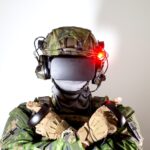Introduction
In the digital era, one of the most transformative technologies to emerge is computer vision (CV). By mimicking human perception and cognition, computer vision algorithms enable computers to understand and interpret the visual world. This technology is becoming more advanced and is finding a place in various industries, proving to be a game-changer for many businesses.
According to a report by Allied Market Research, the global computer vision market is projected to reach $48.32 billion by 2027, growing at a CAGR of 9.3% from 2020 to 2027. This statistic highlights the potential for small businesses to leverage this technology to improve operations, decision-making, and customer service.
What is Computer Vision?
Computer vision, a subfield of artificial intelligence (AI), enables computers to see, identify, process, and make sense of visual data just as human eyes do. It involves image processing, pattern recognition, and deep learning models to identify objects, scenes, and activities in images and videos.
The goal of computer vision is to automate tasks that the human visual system can handle. This includes detecting and identifying objects, recognizing scenarios, or processing visual data to make informed decisions.
Practical Applications of Computer Vision
1. Retail
In the retail industry, computer vision is used to improve customer experiences and streamline operations. For example, Amazon Go uses computer vision to allow customers to shop without checkout lines. Cameras and sensors track what customers pick up and automatically charge their Amazon account when they leave the store.
2. Healthcare
Computer vision has vast potential in the healthcare industry. It can assist doctors in diagnosing diseases, monitoring patient health, and performing surgeries. For instance, Google’s DeepMind Health uses computer vision to detect eye diseases early, potentially preventing vision loss.
3. Surveillance and Security
In surveillance and security, computer vision can be used for facial recognition, crowd monitoring, and threat detection. Companies like AnyVision use computer vision to provide advanced surveillance capabilities, improving safety and security in various settings.
Future Implications and Trends
As technology advances, the application of computer vision is expected to grow. One of the emerging trends is the integration of computer vision with other technologies like IoT, robotics, and machine learning.
In the future, we can expect to see more autonomous vehicles on the roads, powered by computer vision. Similarly, drones equipped with computer vision could be used for tasks like package delivery, agricultural monitoring, and disaster management.
Furthermore, the use of computer vision in augmented reality (AR) and virtual reality (VR) is on the rise. This technology could revolutionize gaming, real estate, education, and more.
Conclusion
Computer vision holds immense potential to transform various industries, from retail to healthcare to security. By understanding and implementing this technology, small businesses can improve their operations, customer service, and decision-making.
As computer vision continues to advance, it will become an even more integral part of our lives, powering innovations like self-driving cars, smart surveillance systems, and immersive AR/VR experiences. The future is bright for those who embrace this transformative technology.




